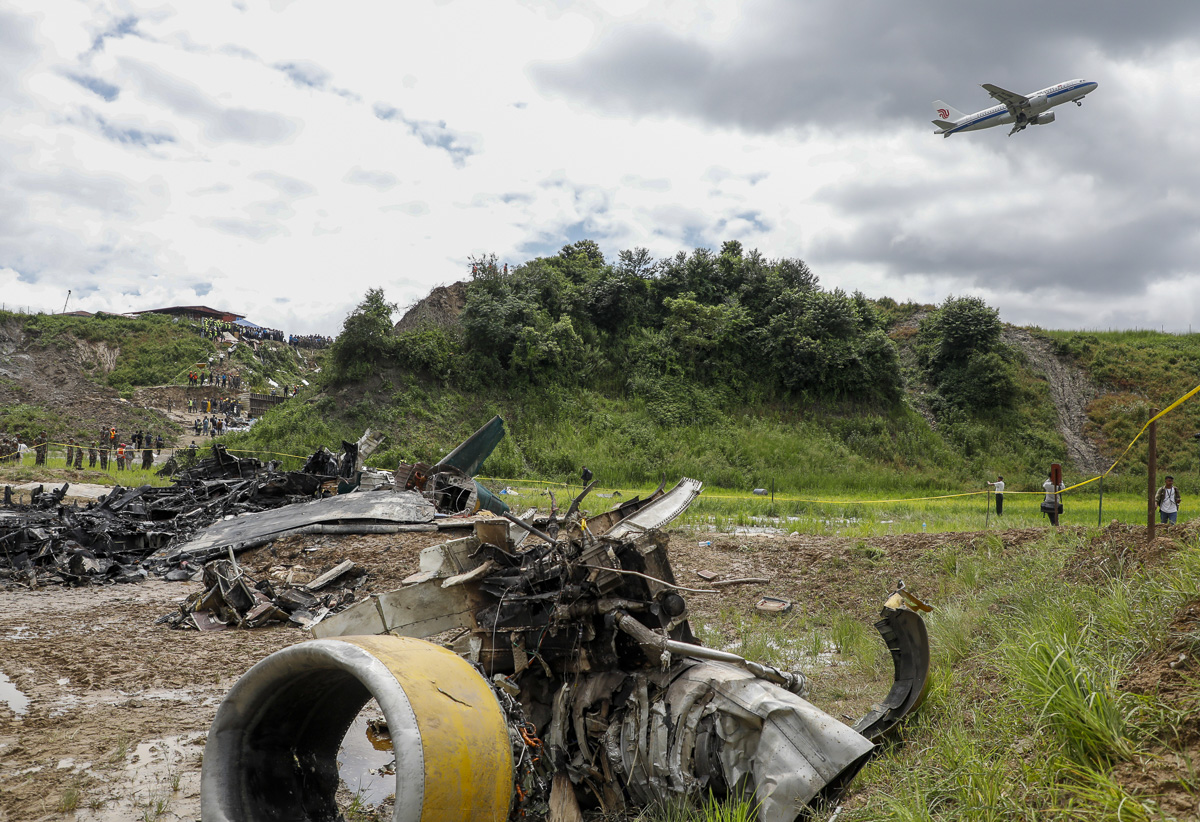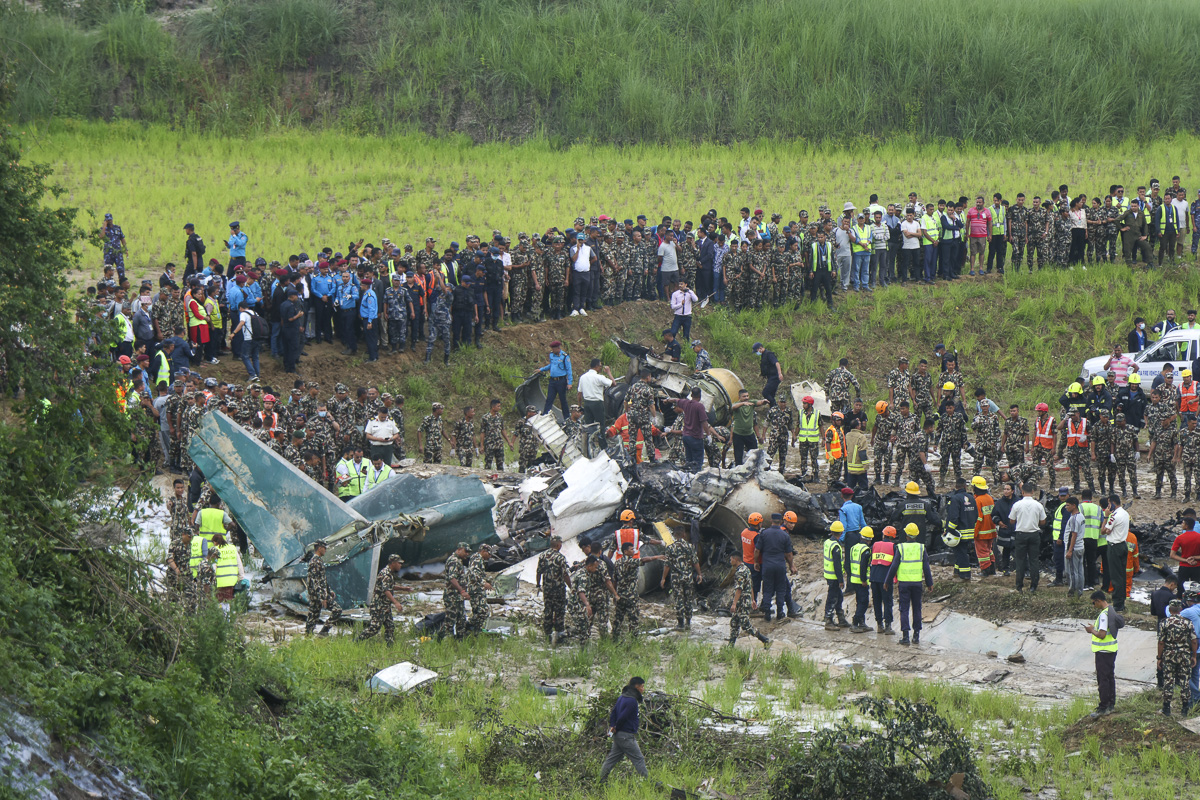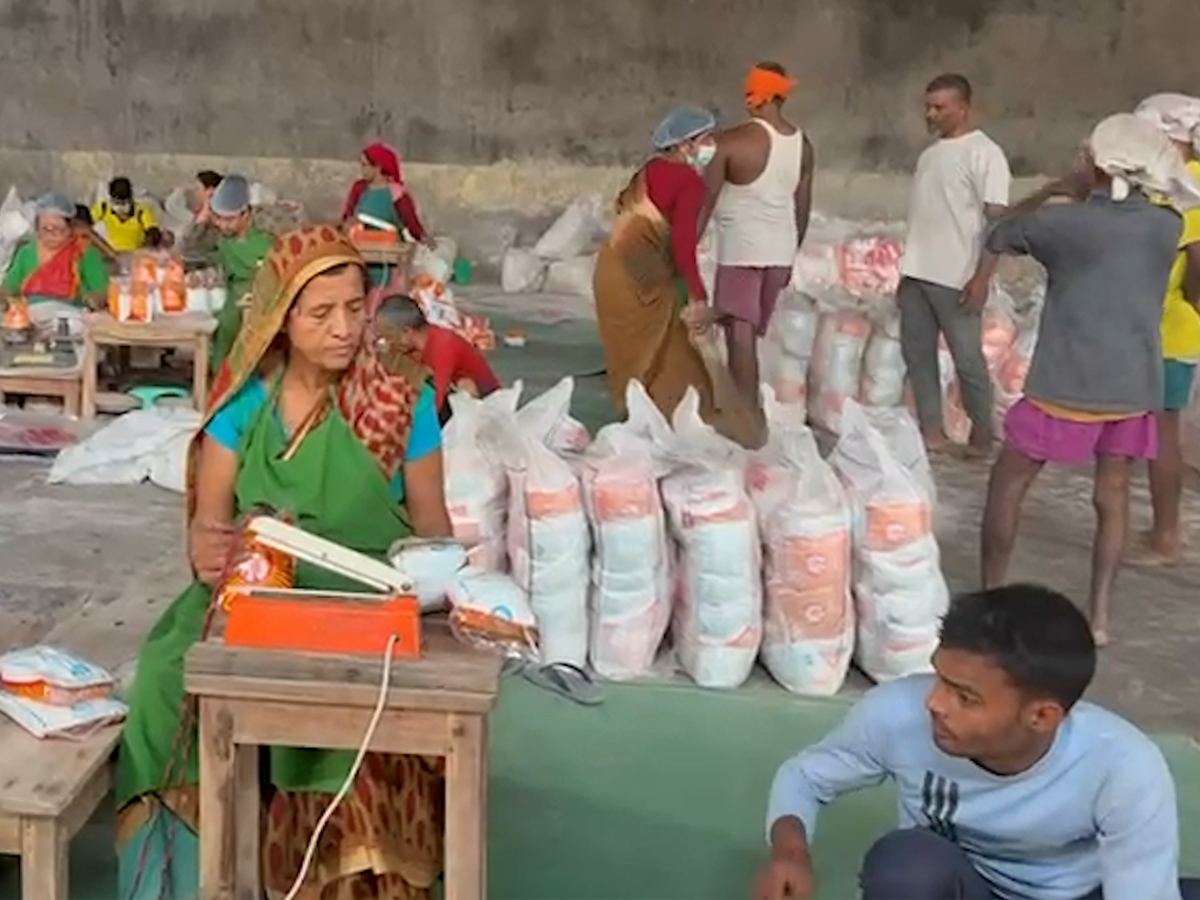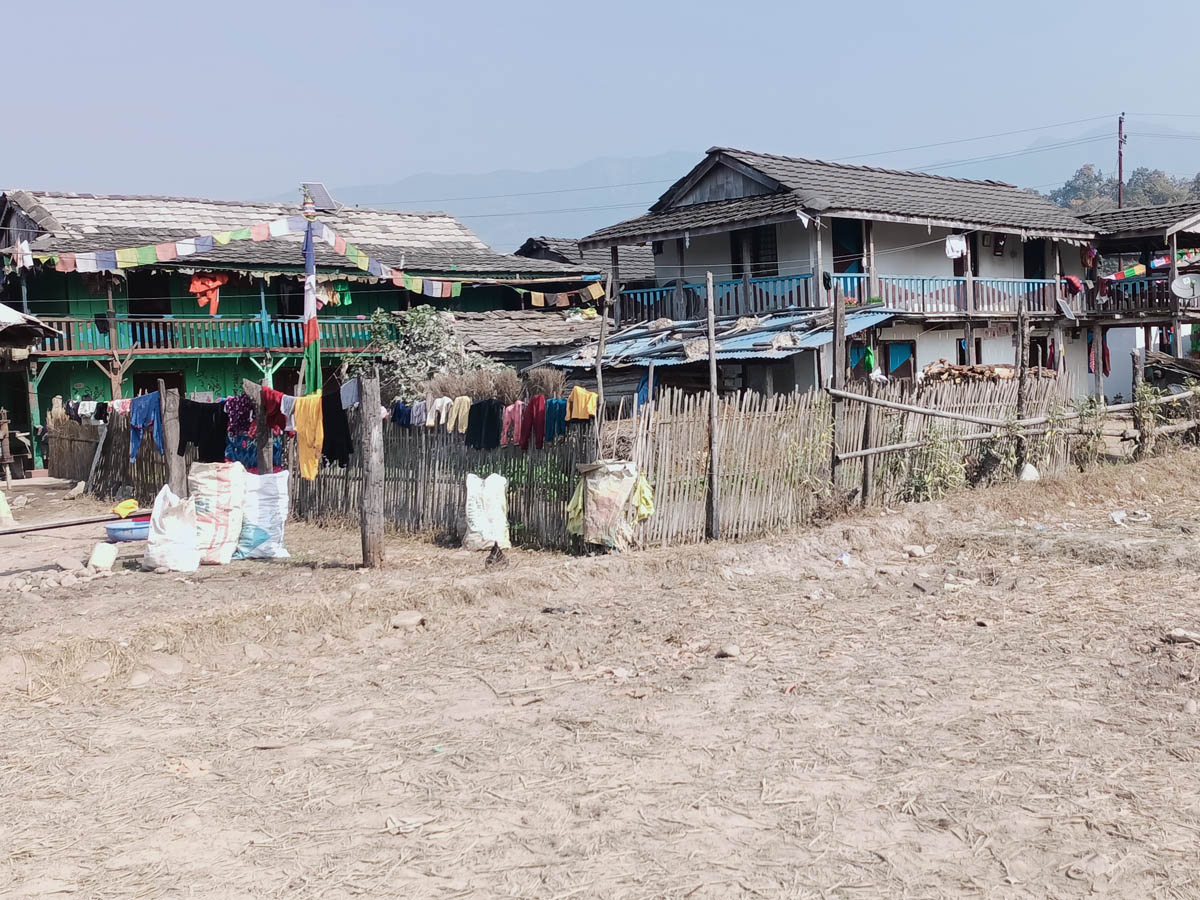None of the recommendations of the aircraft accident investigation commissions are implemented while cases of plane crashes are increasing with troubling frequency in Nepal.
Seventy years after the first plane crash in Nepal, yet another plane crash, the 108th such incident, took place in Nepal on July 24, 2024. A Saurya Airlines aircraft, with 19 persons onboard including crew members, crashed moments after it took off from the Tribhuvan International Airport.
 The plane was bound for Pokhara. The plane was flying to Pokhara for a ‘C’ check with technicians onboard. The captain of the ill-fated flight survived the crash but all the other 18 members perished in flames. Soon after the incident, the government of Nepal formed an investigation commission to investigate the cause of the accident.
The plane was bound for Pokhara. The plane was flying to Pokhara for a ‘C’ check with technicians onboard. The captain of the ill-fated flight survived the crash but all the other 18 members perished in flames. Soon after the incident, the government of Nepal formed an investigation commission to investigate the cause of the accident.
The Council of Ministers formed the commission under the leadership of Ratish Chandra Lal Suman, former Director General of the Civil Aviation Authority of Nepal (CAAN). If the commission completes its work as planned it will submit the report identifying the potential causes within 45 days to the government. With it, one ritual will come to an end.
Our study of around 80 plane crash reports shows that the potential cause of the crash is the same and none of the recommendations submitted by any of the commissions have ever been implemented.
Thus, there is a real risk of the report being submitted by Ratish Chandra Lal Suman-led commission meeting a similar fate. The Saurya Air crash happened a year after a Yeti Air aircraft crash in Pokhara on January 15, 2023. The probe commission formed to investigate the Yeti Air crash had identified human errors along with lack of proper coordination between the pilot and co-pilot, heavy workload and stress as potential causes of the crash.
The investigation of another Yeti Air crash, that took place on July 2, 2006, in Bajura, had similar conclusions about the causes of the crash: Human error, heavy workload, and the situation caused by the same.

All the reports we studied repeat the same stories about the potential causes of crash and the recommendations offered to minimize the crash.
This recurrent pattern of probes and recommendations have sent a bad message to the international arena that Nepal is still not sensitive about air safety – one reason why Nepali airline companies are listed in the European Union’s Air Safety Blacklist. Buddhi Sagar Lamichhane, then Joint Secretary at Air Transport Division had told us after the Yeti Air crash in Pokhara: “The plane crash in Pokhara has, for the moment, has stopped the possibility of Nepal being delisted from EU’s bad book.”
Since November 2013, the EU has imposed a ban on all airlines from Nepal from flying into the European Union – which means Nepali airlines cannot fly in European skies.
Commissions are formed as per the provisions in the Civil Aviation (Accident Investigation) Rules 2071 BS and Convention on International Civil Aviation (Chapter 13) to investigate the causes of accidents. The sole objective of the investigation is the prevention of accidents of a similar nature in the future. “It is not the purpose of this investigation to apportion blame or liability,” nearly all the reports mention.
This means that the report does not recommend any punishment to those who are responsible. The priority seems to be to prevent the recurrence of such accidents in the future. Though the report claims to “identify the probable cause of the accident” and not blame anyone, there are a lot of accusations and a blame game in these reports. Individuals, machines, geographical terrain, etc are identified as potential causes or associate factors. The investigation commission has identified the pilot’s mistake of pulling the wrong ‘lever’ as the cause of the Yeti Airline crash in Pokhara.
Nagendra Prasad Ghimire was the coordinator of the commission, while Major General Dr Dipak Prasad Bastola, PhD (Retd), Sr Captain Sunil Pradhan and Sr Er Ekraj Jung Thapa were members and Joint Secretary Buddhi Sagar Lamichhane was the member secretary. Lamichhane is facing a court case in Nepal Airline Corporation’s wide-body aircraft purchase scam – probably the biggest scam in Nepal’s aviation history.
The CIAA had filed a case against Lamichhane in the Special Court on corruption charges on April 14, 2024, after which he was suspended from the position. Nepal Investigative Multimedia Journalism Network (NIMJN) had talked to him before he was suspended. "The decision of the Pilot In Command (PIC) to enter the cloud despite adverse weather conditions caused the accident," the report said. But nothing has been done to rectify this flaw.
The decision to continue entering into the cloud, not using the available flight process, non-compliance of the directives of the Air Traffic Control are among the human errors identified by the report we have studied.
The Ministry of Culture, Tourism and Civil Aviation and CAAN often face allegations of blaming the pilot or crew members instead of finding ways to rectify the human errors. Yubaraj Bhattarai, a retired senior pilot of Nepal Airlines, says: “They don’t seem to be tolerant toward the pilot. No attention has been paid towards the factors that push pilots to human errors.”
“Little attention is paid towards the factors such as pressure from the management side, lack of facilities and lack of effective training that actually push them to commit human errors and rectify them,” he said. Around 60 reports under our study cite lack of proper management of communication such as conversation among cockpit crew – pilot, co-pilot and cabin crew – and their communication with the Air Traffic Control, as probable causes.
Whether it is the November 15, 2009 Manang Air helicopter crash in Humla, Tara Air crash in Myagdi or Fishtail Air crash (August 8, 2016) in Nuwakot, all investigation reports of the respective commissions point to issues related to management and proper use of resources inside the aircraft. The reports recommend proper management of communication to prevent accidents in the future. However, the investigation report of another subsequent crash also makes similar recommendations. This shows that the recommendations have not been implemented.
Buddhi Sagar Lamichhane, who has served as the Joint Secretary at the Ministry of Culture, Tourism and Civil Aviation, and worked in the investigation commissions for the last 10 years, defends the recommendations by saying: “The commission does not say that similar recommendations were made in the past and they need not be repeated this time. When we see a recurrence of similar issues, should we not make similar recommendations?”
He claims that there is the required training for the cockpit crew. “You cannot say the weakness is related to training. You cannot call the people inefficient but the problem lies in their behavior and conduct, which again, is not always the case. So, what is the solution?” Lamichhane asked. He had tried to stay out of the investigation commission citing pilots’ behavior as a hindrance to implementation of the commissions’ recommendations.
Bhattarai, an experienced pilot, believes that managerial responsibility is key to improved professional behavior and ensuring discipline. According to him, rather than blaming human errors we need to identify the factors which contribute to human errors and address those factors. “If the authorities in managerial responsibility, such as CAAN, does its duty properly, the factors that lead to human errors, the key cause of accidents, can also be rectified,” Bhattarai added.
The solution to this is effective crew resource management (CRM) training and its implementation. CRM is about using available resources for flight crew personnel to assure a safe and efficient operation, reducing error, avoiding stress and increasing efficiency.
The CRM concept actually was started to deter serious accidents in the future. Tenerife airport disaster, also known as runway collision of two Boeing 747 passenger airplanes in the Canary Islands of Spain on March 27, 1977, resulted in the death of 583 people. Following this, NASA recommended CRM training, which United Airlines in the US started for the first time. By the 1990s, CRM training spread to other parts of the world. In Nepal, it was made mandatory in 2010. CAAN Information Officer Gyanendra Bhul, however, says it started much earlier in Nepal. “Some airlines had been providing CRM training even before that.
In 2010, it was made mandatory for all,” he said. In principle, CRM training is required for all cockpit crew to get their license renewed every year but often the training is not about aviation security, but is often used for the purpose of license renewal. Bhattarai has been providing such training to the pilots and co-pilots of Nepal Airlines and he admits that such training has not been effective enough. “Seems like they are in the training because without it they would not be able to get their licenses renewed,” said Bhattarai. “The fact that its effectiveness has not been monitored is a major problem.”
CRM gone awry
The Accident Investigation Commission report on Tara Air crash in Mustang on May 29, 2022 says that ‘CRM was not effectively implemented.’ It also says that there was an experienced pilot and inexperienced co-pilot in the cockpit and they were flying in a high altitude, and a difficult route in adverse weather conditions. There was an issue in communication and the pilot failed to take appropriate decisions about the adverse weather.
The report points out these as potential causes of the accident. The investigation report on June 9, 2018 Tara Air accident in Jumla pointed out ‘ineffective use of CRM technique throughout the duration of the flight and lack of situational information’ as the subsidiary cause of the accident. Nearly all the reports of the investigation commissions mention these as responsible factors. For example, the investigation commission report on the June 24, 2011 Tara Air crash in Jumla (Simikot) recommended managing ‘effective CRM classes for the crew members’ as a safety measure.

Nearly all the commissions’ reports, exceptions apart, point out human factors as primary or secondary potential causes of accidents. According to the data of CAAN, there have been a total of 109, involving both big and small aircraft, cases of air accidents.
The investigation report has mentioned ‘technical cause’ as responsible for the Agni Air crash of June 14, 2012, in Jomsom. However, it has also mentioned lack of ‘implementation of CRM’ which could have led to neglect of 'technical weakness.’ The investigation reports often point to human factors as primary or associate causes and more specifically the lack of proper coordination and communication between the pilot and co-pilots inside the cockpit and offer recommendations based on the same. This has been going on as of now.
“Human factors, which are related to CRM, are prominent in the accidents that occur in Nepal. This means that we have not been using the resources properly,” said Bhattarai. “Again, CRM is comprehensive and vast. This includes the use of resources in the cockpit, skills of an individual, communication between colleagues, communication with other planes and air traffic control, weather updates, among others.”
Even experienced pilots and those who have served as members of the investigation commissions have succumbed to plane crashes in Nepal.
Prabhakar Ghimire who had the experience of flying a plane for 17,500 hours and who was also an aviation security inspector, was the pilot of the plane that crashed in Mustang in 2022. The investigation commission of this accident points to ‘ineffective communication inside the cockpit, pilot not following the advice of the co-pilot and lack of effective implementation of CRM’ as the factors responsible for the accident.
Ten years before he died in the crash in which he himself was flying, Ghimire was the member of the investigation commission formed to probe Nepal Airlines Twin Otter crash of February 16, 2012 in Arghakhachi of Nepal. The commission, of which he was a member, by pointing out the human factors, had recommended ‘effective implementation of CRM.’ Ironically, the cause of the crash of the plane flown by Ghimire was also found to be ineffective implementation of CRM. This shows that pilots themselves, who propose such recommendations, do not follow them themselves.
Why does this happen? Various kinds of pressures that pilots face could be the cause, says pilot Bhattarai. According to him, a pilot and other crew members also are affected by weather conditions, emotional state and psycho-social situations and that could constrain their abilities to effectively use the available resources. “Which is why we should not be taking CRM just as a training but as a provision of regular monitoring and providing necessary support and facilities,” he said.
NASA recommended the concept of CRM training following the Canary Islands crash on March 27, 1977. However, it was only enacted after the United Airlines plane crash in Portland, Oregon on December 28, 1978. CRM includes several aspects including the rules and conducts to be followed during the time the planes fly in the skies to the time they land at the airport. “This is such an important issue but in Nepal it has often been like training for the sake of training,” said Bhattarai.
Though government authorities are not found to be working to ensure CRM compliance, government officials disagree. Lamichhane (who was Joint Secretary at the time we talked to him) at CAAN’s Air Transport Division said aviation safety is the priority of his office. “Aviation safety is our priority and we have been working accordingly as well,” he said. “We have been asking the companies to regularly implement the CRM rule. We work to make all systems including CRM and others smooth and functioning,” he said.
But recurrent themes of human factors and the recommendations for proper communication in the cockpit provided by one report after the other of the investigation commissions refute the claim. One may compare the reports and recommendations of the Agni Air crash (in Jomsom) of May 14, 2012 with that of the Agni Air crash that occurred on March 23, 2005.
In 2005, the investigation commission recommended enhancing leadership, crew cooperation and risks and errors management by reviewing the policies, processes and curriculums of CRM training. The investigation commission report of the 2012 crash mentions “if those recommendations had been followed and implemented, it would have prevented the serious accident of now.”
Proposing and disposing
It is ironic that investigation commission reports cite previous reports and suggest that if the previous recommendations had been implemented the accidents could have been prevented. Yet, civil aviation officials claim that they actually implement the recommendations of the reports.
Gyandenra Bhul, Information Officer at CAAN, says, “We immediately implement the recommendations that are provided to us. We urge service providers to implement the recommendations but we cannot force them.” CAAN, however, has the monitoring as well as managerial powers and can push for the implementation of recommendations. Nagendra Prasad Ghimire, former Director General of CAAN, who had also led the investigation commission, says that CAAN has the power to take strict action for compliance.
But again, as things stand, neither CAAN nor the ministry has a record of how many recommendations of the past investigation commissions were implemented and how many were not. Worse, they do not have the investigation reports, which remain in the institutional memories of these offices, submitted by several commissions.
Lamichhane once said lightly: ‘Recommendations of the commissions are not like a panacea, they suggest keeping track record, it goes into implementation, and recommendations by another commission are also implemented.’ This says many things about the reality of the commissions and recommendations made by them. “We need to give managerial and monitoring responsibilities to separate entities as envisaged by ICAO for effective implementation of commission reports,” said Ghimire. “If we have an independent authority, it will help in implementing the recommendations.”
Nepal’s legal provisions on aviation are based on ICAO provisions. As per the provisions related to accident investigation in Chapter 13 of the ICAO rules, managerial and implementation authorities should not be vested on the same authority. But CAAN assumes both the responsibilities and powers. Investigation commissions, in their recommendations to the ministry, have called for constituting a separate permanent investigation commission.
CAAN publishes an aviation safety report every year. According to its 2022 report, 75 percent of the recommendations – from 2012 to 2021 – have been implemented, six percent partially implemented and 11 percent not been implemented at all. The report says eight percent of the recommendations were not worth implementation.
CAAN’s claims in reports notwithstanding, the latest aviation audits by ICAO show that the lack of effective implementation of investigation commissions’ recommendations are among the major factors to tarnish Nepal’s aviation image in the international arena.
In ICAO’s audit dated April 13-25, 2022, which measures aviation security status based on eight indicators/sectors, effective implementation of security provision was rated at 70.10 percent, which is higher than the targeted 60 percent. Nepal had secured only 46.97 percent in 2009.
This can be considered as a positive change but ICAO has rated Nepal only at 21.69 percent point on place crash and accident investigations.
Read our guidelines for Republishing this story here.



